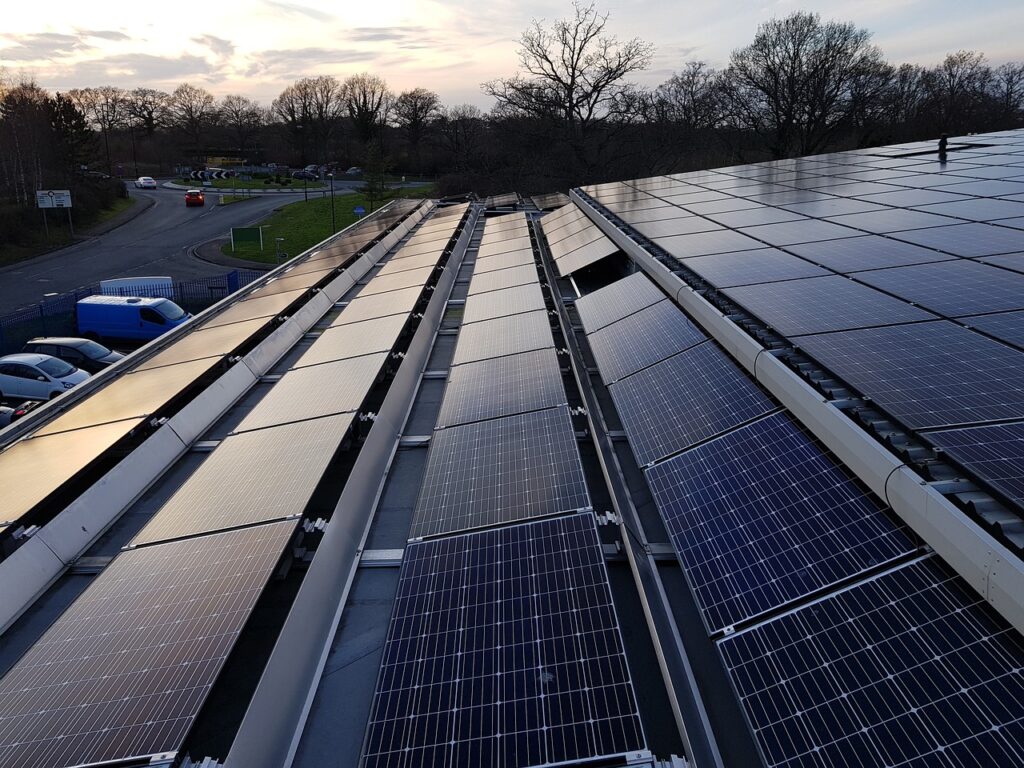Sun panels contain photovoltaic cells, which may transform sun energy into electrical power. The amount of power produced in a small space serves as a proxy for the conversion process’ level of efficiency. The efficiency of solar panels, which typically ranges between 15% and 20%, sheds insights on how effectively sunshine can be captured and converted into useful energy.
Solar cells absorb light to Create Electricity
Solar cells absorb light to create a voltage and current that are then used to turn sunlight into electricity. While they cannot move in the p-layer, electrons can migrate in the n-layer. Only specific charges can pass through the area where the two layers link when sunlight strikes the layers. In turn, energy is produced.
The efficiency of solar panels is primarily influenced by the arrangement and configuration of the cells across the panel.
The efficacy of the protective back sheet is influenced by its color, as elevated temperatures result in decreased efficiency. Hence, shades such as blue or green prove to be more advantageous compared to black.
The inclination of solar panels, referred to as their angle or tilt, plays a significant role in maximizing the benefits of solar radiation. When panels are positioned parallel to the ground, their efficiency is compromised compared to those angled toward the sun.
The ideal tilt varies according to the latitude of one’s residence or establishment as well as the time of year. While it is often impractical to adjust panel tilt with each season, a viable alternative is to install them at various angles that can adapt to different seasons and the pitch of the roof.
Basic Assumption – Solar Cell Manufacturing Company in India
The common assumption holds that heightened solar panel efficiency corresponds directly to the intensity of the sun’s heat; however, this belief, in fact, stands contrary to reality.
The amount of power generated by your panel per square meter is measured by a metric called module efficiency and every solar cell manufacturing company in India has this basic assumption.
Before using module efficiency as the determining criterion, if accompanying you are unsure which panels to select, please examine aspects such the panel quality, the performance and labor guarantees, the manufacturer’s presence in Australia, and the pricing.
Solar panels’ effectiveness may not directly align with individual cell efficiency. Typically, 15-20% efficiency ranges, but some cells can achieve 42% efficiency. These impressive efficiencies are often obtained in controlled laboratory conditions and may not be applicable to regular household usage.
They achieve efficiencies as high as 42%. However, it is essential to consider that these impressive efficiencies are often obtained in highly controlled laboratory conditions and may not be applicable to regular household usage.
Premier Energies – Solar Module Manufacturers in India
An established Indian company called Premier Energies has devoted a significant amount of time to the creation of ecologically acceptable energy sources, establishing itself as India’s top Solar module manufacturers in india. Their steadfast dedication is to make a difference for the good of our planet and all its people.
You may also like
-
How Does Plywood HSN Code Decide the GST Rate for Traders and Manufacturers?
-
POS Terminal Type: Which Is Best for Your Business?
-
How to Choose Fixed and Portable Gas Monitors for Industrial Gas Detection?
-
Simplifying Trademark Registration in Hong Kong: What Businesses Need to Know
-
EPR Registration and Annual Returns Explained: Compliance Made Simple for Businesses

